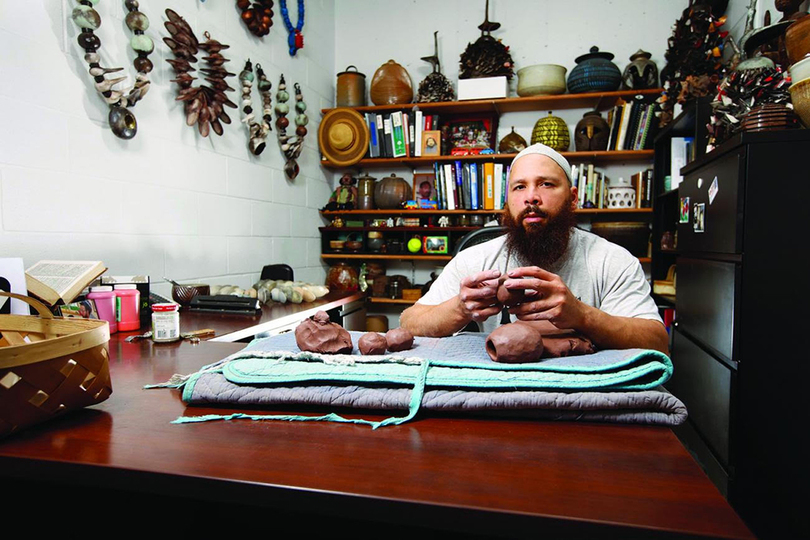SU professor Sharif Bey to showcase artwork at national museum

Courtesy of Sharif Bey
Sharif Bey, an associate professor of art at Syracuse University, will have 25 pieces of his artwork showcased in an exhibition at the Smithsonian Museum of American Art’s Renwick Gallery this month.
Every two years, the Smithsonian American Art Museum’s Renwick Gallery selects four artists to take part in a massive exhibition, where the artists share an expansive full floor to showcase their work. This year’s exhibition, opening on Nov. 9, will feature work from Sharif Bey, an associate professor of art education at Syracuse University.
“Having my artwork put into the Renwick got me sentimental,” said Bey, whose passion for art was ignited at a young age.
Although Bey comes from an artistic family, he was the only child out of 12 to seriously pursue it as a career. Bey’s father taught him to whittle as a child, and the rest was history. Growing up in Pittsburgh, where gang violence was rapidly increasing, Bey’s parents were happy to see him occupy his time with art.
In fourth grade, Bey was invited to be a part of the Carnegie Museum of Art’s program, The Art Connection, the same one Andy Warhol was in. It allowed him to set himself apart from family members and made his image as an artist more serious.
As for what drew him to pottery-making, his close relationship with his ceramics teacher at such a young age propelled the rest of his career. Ever since then, Bey has lived out his passion, existing in creative spaces every moment he could get.
Peter Beasecker, a professor of studio arts specializing in ceramics at SU’s College of Visual and Performing Arts, said he was excited to see Bey’s work receiving so much recognition.
“Dr. Bey has been a professional artist for over 20 years, and it is extremely gratifying to see one of the most esteemed art institutions in the country acknowledge the strength of his work and vision as an artist,” Beasecker said.
Bey said he was first approached about the exhibition last September, when he received an email from the Renwick Gallery asking if he was “interested” in showcasing his work.
“Once the curators invited me, it was apparent more people were watching me than I thought,” Bey said.
Bey has 25 pieces in the show titled “Disrupting Craft,” which contextualizes how people can engage with various art practically, socially and politically. Bey said this exhibit is especially meaningful because, for the first time, he was able to exhibit three types of work that are typically categorized as three different disciplines: African pots, necklaces and multi-medium pieces incorporating iron nails.
Even to the untrained eye, there is an undeniable African style incorporated into the majority of Bey’s work. Bey said that the African style paired with his exploration of the distinguished “cultural utilitarianism” of the bowls, pots and cups from this continent is what ultimately drew him to adopt this style in his own work. But, he said, it was not an active decision.
“I am a collector of African objects … I think it was almost through osmosis that my inspiration came from what I saw on walls, into my work,” Bey said.
Bey will deliver a talk in tandem with a demonstration on Jan. 29 in the exhibition galleries. He also plans to include a segment where he advocates for the arts and their “transformative powers.” But Bey does not believe his work is an expression of himself, but rather the energies he puts into them.
“Art gives me a space to create chaos or peace,” Bey said. “To me, it’s about funneling energies. This is the space where I engage or disengage. But it’s uniquely my experience.”
When looking at his work through the lenses of chaos and peace, the balance becomes clear. On one of his pots, a bird sits perched on the lid, seemingly oblivious to the jagged shards of pottery protruding from the body of the pot.
Looking back, Bey said the opportunity to continue his passion for art is a privilege, since many people don’t have the opportunity to live out their passions through their occupation.
“Life is like a storm, and art is what grounds you,” Bey said. “I feel sorry for someone who has not yet discovered it.”





